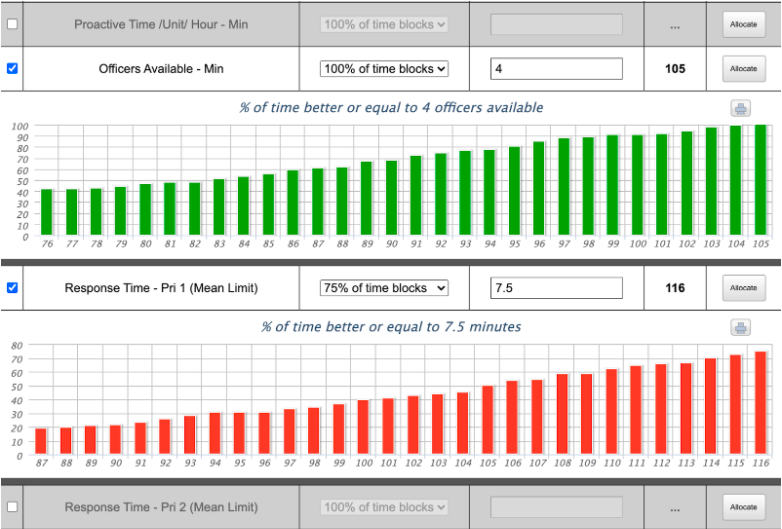Police Staffing, Scheduling and Deployment Services (720) 685-9550
Police Staffing, Scheduling and Deployment Services (720) 685-9550

Police budgets were fragile before nationwide calls to Defund the Police became loud and impossible for government leaders to ignore. The economic downturn resulting from the COVID-19 crisis hit local budgets hard and fast. Law enforcement agencies were already on track to lose money they thought the economy would provide. Money they were planning to use for hiring more officers and increasing pay amongst other things. Those plans fell apart when the Safer-at-Home orders began and the revenue needed to supply those funds dried up. Now the push to decrease police budgets and divert the funding away from law enforcement is being thrust upon city and county leaders. This is forcing law enforcement to run much leaner than they have in the past.
Most law enforcement agencies were placed on a hiring freeze when the COVID-19 pandemic started, impacting local budgets. Now, those vacancies have become permanent, at least for the foreseeable future. Vacancies in the sworn contingent of law enforcement agencies are immediately felt in patrol operations. Patrol is where new police officer hires are predominantly placed, filling holes created by attrition and the cascade of promotions and reassignments that occur when tenured officers depart.
Patrol operations not only feel the impact of short staffing before other parts of the agency do, but they also are most affected by officer safety matters. Having officers available to respond, when you need them the most, is paramount to officer safety.
So, how do you ensure availability to maintain officer safety and meet the workload demands of your community while your staffing number decreases?
To accomplish this you must employ an evidence-based approach, one that illustrates exactly what the impact of short staffing will have to your patrol operations. Using a data-driven process not only allows you to see exactly when officer safety vulnerability occurs, but it also allows you to transparently define those risks for stakeholders.
Below, an evidence-based approach is used to determine the number of patrol officers needed to secure officer safety. In this example, the agency size and workload dictate that four officers should always be available for backup assistance if needed. For this agency, 105 patrol officers are needed across the schedule to meet that requirement. However, if the agency only has 95 patrol officers to deploy across the schedule due to budget cuts, then the security of having four officers available for backup assistance decreases to only 80% of the time. With this data, stakeholders can make informed decisions with the knowledge of the associated risks with reduced staffing numbers
At the same time, the agency can see what happens to their response time goal by reducing their patrol staff. In this example, if the agency wanted to attain an average response time of 7.5 minutes to emergency calls 75% of the time, they would need 116 patrol officers. If the agency only had 95 officers, as in the above example, they would only be able to attain a 7.5 minute response time average to emergency calls 30% of the time. Again, this provides the agency, stakeholders, and community a transparent, data-driven method to evaluate the effects of reduced staffing on service expectations.

Whether it’s due to direct budget cuts or redirecting funds, police agencies will need to figure out how to safely deploy and provide effective services with leaner resources. Using data to drive deployment decisions is smart policing.
The Deploy Plus platform by Corona Solutions is the most economical way for agencies to provide this level of transparency and high-level, evidence-based decision making. Contact us today to find out how your agency can adequately staff for officer safety in the midst of budget cuts.
Gain new insights to drive efficiency, effectiveness, and community trust. Download a FREE sample report, and take the first step toward a demand-driven policing strategy.